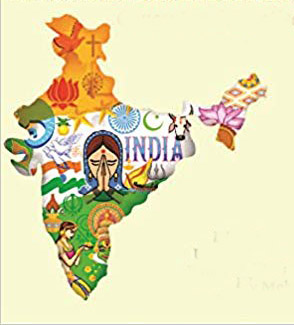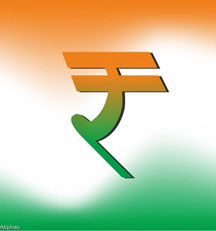Knowlex-Pro
Knolex-Pro

Knolex-Pro


 by Fr. Dr. M. D. Thomas
by Fr. Dr. M. D. ThomasExamples We Set Today

by Don Aguiar.
India at the time of our Independence and a couple of decades after that did have the dispensation to set examples for a peaceful, democratic and secular republic of India.
The present dispensation priorities are different and require setting examples of bhaktism, communalism, and nationalism, patriotism, big talk and fake news…..resulting in intolerance, communalism, revenge, unemployment…. The right wing government ideology is to make India a Hindu Rashtra in the very near future.
At present context the Americans say –
At least we guys have –
Donald Trump, Bob Hope, Stevie Wonder and Johnny Cash
YOU in India have –
NaMo, No Wonder, No Hope, No Cash – ONLY BIG TALK, unemployment, Revenge, Intolerance….
Will they attain their goal by exploiting the unemployed or will the unemployed display of enthusiasm by the dream they are promised of changing their adversity into advantage be a liability to their attaining their goal of a Hindu Rashtra. The present happenings shows the desperation of the situation, may help shape the corrective action needed to be taken.
Yesterday a message was sent out by the Government on Swatch Bharat Divas. The message was revived and read by the unemployed youth in different states too who were recruited by the right wing ideologists. Misunderstanding the message, so in response, they went on a spree and cleaned swiped their neighborhood of …. Cash, jewelry, expensive goods and whatever they could put their hands on.
On asked by an elderly woman as to why they were so excited and buoyant about the whole affair, they showed her the message, it read, “Let’s clean our neighborhood, village, city and country. Let’s strive to create a Swatch Bharat”. Join ‘Swatchhata Hi Seva”
Two small stories that show how the examples we set today, may help shape the character of generations tomorrow.
Story – I
We all know about Al Capone. The notorious gangster, mafia who virtually owned Chicago. He was a crime boss who lorded over the windy city dealing with all sort of crimes prostitution to murder to you name it and he escaped the law for many years.
It was because of one man, his lawyer nicknamed “Easy Eddie” Eddie was very good! In fact, Eddie’s skill at legal maneuvering kept Big Al out of jail for a long time.
To show his appreciation, Capone paid him very well. Not only was the money big, but Eddie got special dividends as well. For instance, he and his family occupied a fenced-in mansion with live-in help and all of the conveniences of the day.
The estate was so large that it filled the entire Chicago City block. Edie did have one soft spot, however. He had a son that he dearly loved. And despite his involvement with organized crime, Eddie tried to teach him right from wrong. Eddie wanted his son to be a better man than he was.
Yet, with all his wealth and influence, there were two things he couldn’t give his son, he couldn’t pass on a Good Name or a Good Example.
One day Edie reached a difficult decision. It’s believed Easy Eddie wanted to rectify wrongs he had done. So he decided he would go to the authorities and tell the truth about Al “Scarface” Capone, clean up his tarnished name and offer his son some semblance of integrity. To do this, he would have to testify against The Mob, and he knew that the cost would be great. Nevertheless, he testified.
Within the year, Easy Eddie’s life ended in a blaze of gun fire on a lonely Chicago street. But in his eyes, he had given his son the greatest gift he had to offer, at the greatest price he could ever pay. Police removed from his pockets a rosary, a religious symbol and medallion and a poem clipped from a magazine.
The Poem read “The clock of life wound but once, and no man has the power to tell just when the hands will stop, at late or early hour. Now is the only time you own. Live, love, toil with a will. Place no faith in time. For the clock may soon be still.”
Story II
World War II produced many heroes. One such man was Lieutenant Commander Butch O’Hare. He was a fighter pilot assigned to the aircraft carrier Lexington in the South Pacific.
One day his entire squadron was sent on a mission. After he was airborne, he looked at his fuel gauge and realized that someone had forgotten to top off his fuel tank.
He would not have enough fuel to complete his mission and get back to his ship. His flight leader told him to return to the carrier. Reluctantly he dropped out of the formation and headed back to the fleet.
As he was returning to the carrier, he saw something that turned his blood cold; a squadron of Japanese aircraft was speeding its way towards the American fleet. The American fighters were gone on a sortie and the fleet was all but defenseless. He couldn’t reach his squadron and bring them back on time to save the fleet. Nor could he warn the fleet of the approaching danger.
There was only one thing to do, only thing he learned growing up. He must somehow divert them from the fleet. Laying aside all thoughts of personal safety, he drove into the formation of Japanese planes. Wing-mounted 50 caliber’s blazed as he charged in, attacking one surprise plane and then another.
Butch wove in and out of the now broken formation and fired at as many planes as possible until all his ammunition was finally spent. Undaunted, he continued the assault. He drove at the planes trying to clip a wing or tail in hopes of damaging as many enemy planes as possible, rendering them unfit to fly. Finally the exasperated Japanese squadron took off in another direction. Deeply relieved Butch O’Hare and his tattered fighter limped back to the carrier. Upon arrival, he reported in and related the event surrounding his return. The film from the gun- camera mounted on his plane told the tale. It showed the extent og Butch daring attempt to protect his fleet. He had in fact destroyed five enemy aircraft. This took place on February 20, 1942, and for that action Butch became the Navy’s first Ace of WW II and the first Naval Aviator to win the Medal of Honor.
A year later Butch was killed in aerial combat at the age of 29. His home town would not allow the memory of this WW II hero to fade and today O’Hare Airport in Chicago is named to the courage of this great man.
So next time you find yourself at O’Hare International, give some thought to visiting Butch’s memorial displaying his statue and his Medal of Honor. It’s located between Terminals 1 and 2.
Uh... Wait, what does these two stories have to do with each other?
Well, you see, Butch O’Hare was… “Easy Eddie’s” son!
Just like “Easy Eddie” - Let’s us hope in the coming election we the people will reverse this present trend to the ideals set by the founding fathers of our nation – for a peaceful, secular democratic republic of India.
